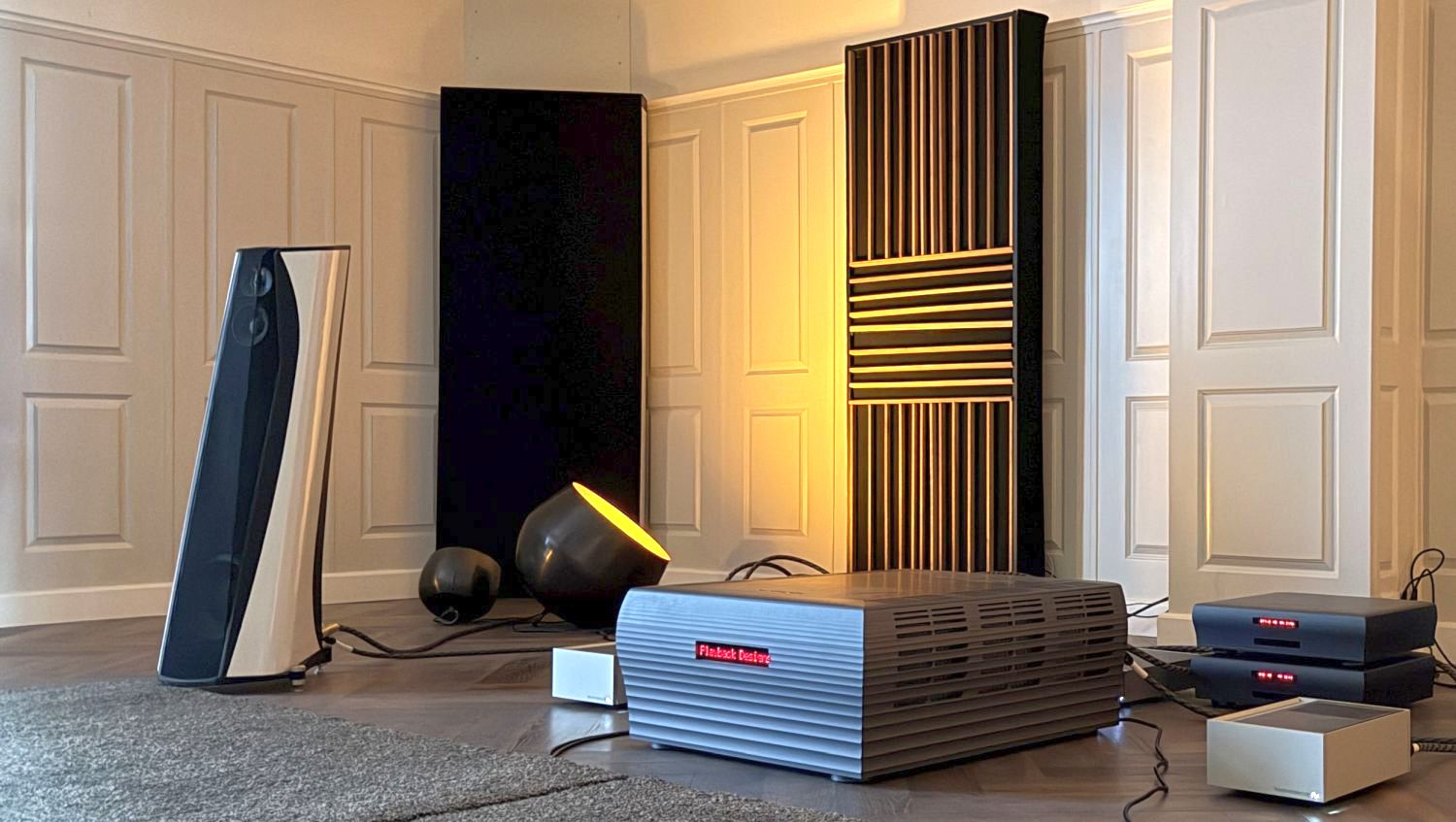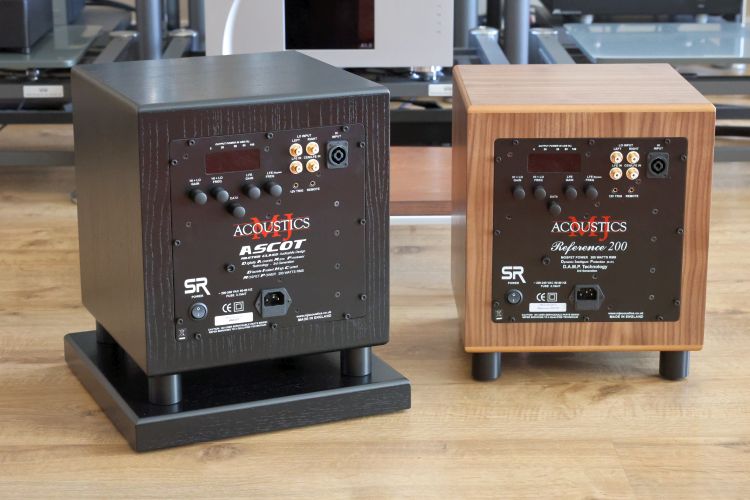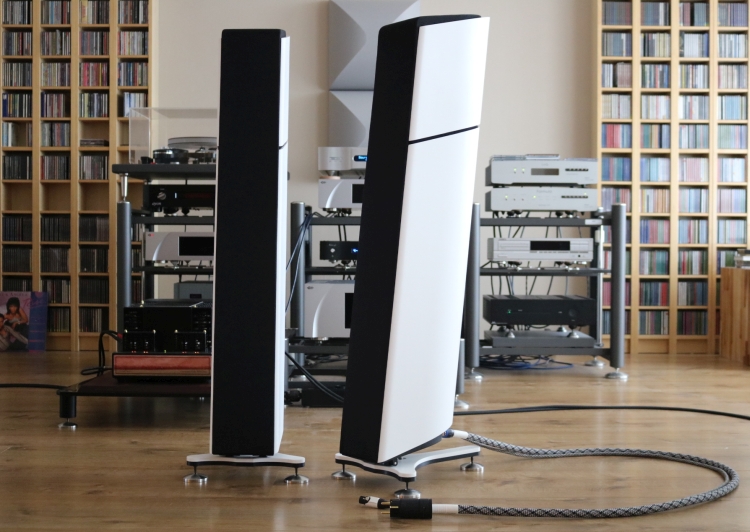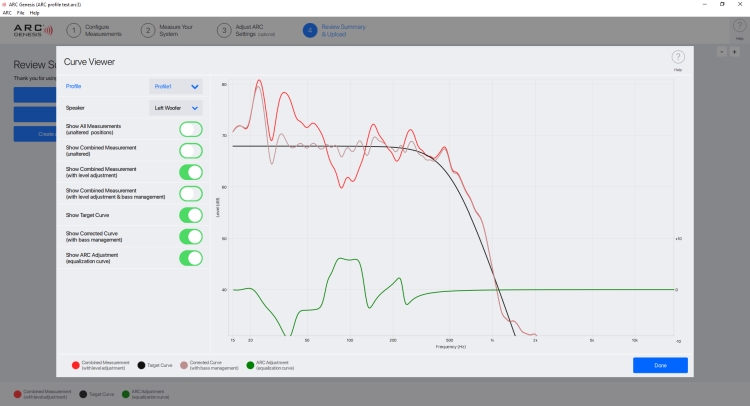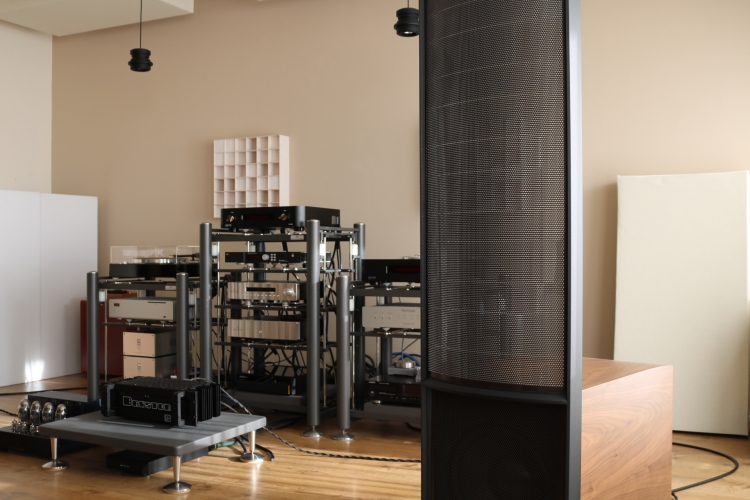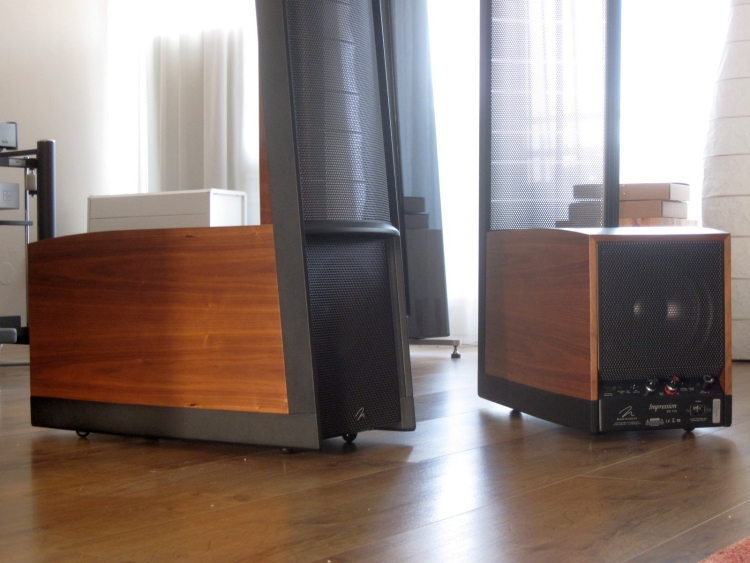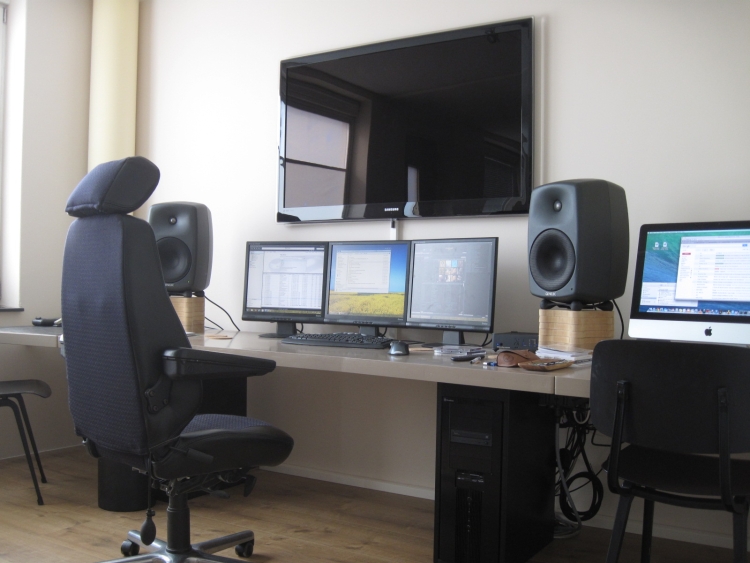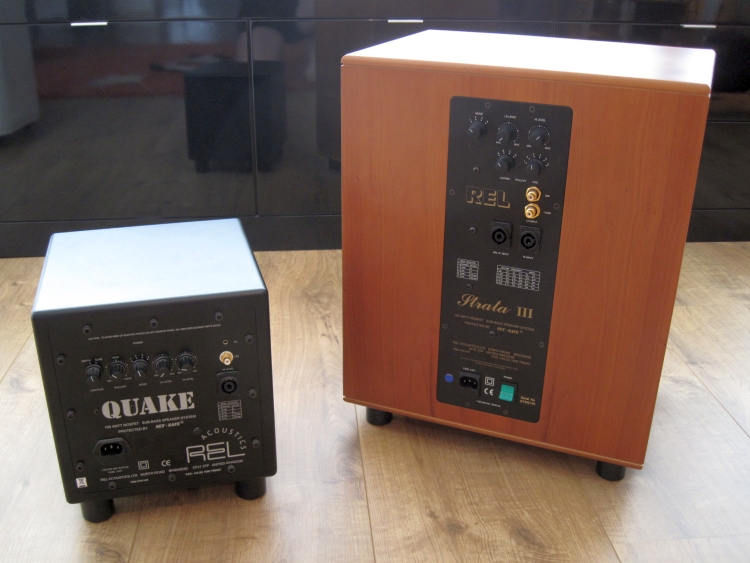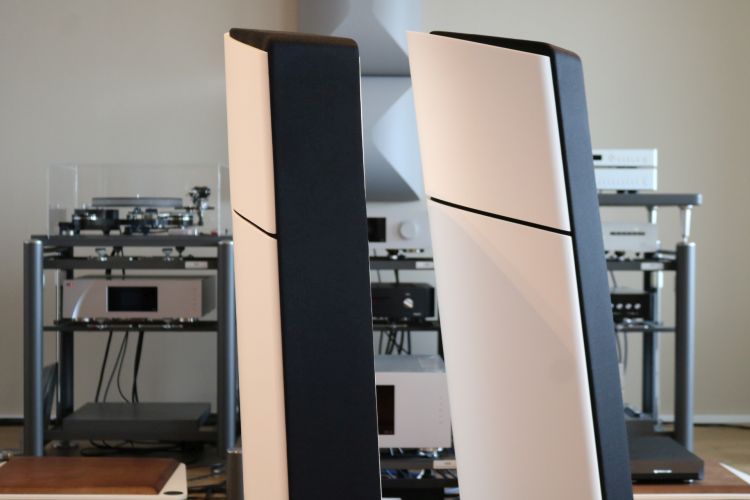
Review organized by Marc Loubeau / Prestige Audio Diffusion
Review samples supplied by Aequoaudio.com
Retail prices in the NL including 21% VAT:
Stilla Base model: 17.999 euro (as reviewed)
Stilla Fully Active: 19.998 euro
Many other options available
Aequo Audio was founded in 2012 by a team of music and hi-fi enthusiasts. Situated in Eindhoven, the Netherlands, and with an emphasis on in-house R&D, the company seeks to manufacture smart, graceful and uncompromised loudspeaker solutions for the audiophile market.
The company’s first loudspeaker model, the Ensis, was launched in 2016 but until recently, I managed to not notice their presence in the market. Quite undeservedly, I might add. Those who have visited the XFi show in Veldhoven in 2019 will no doubt have seen and heard the Ensis loudspeakers in a great room and with great sound. As can be read in my show report, I was impressed.
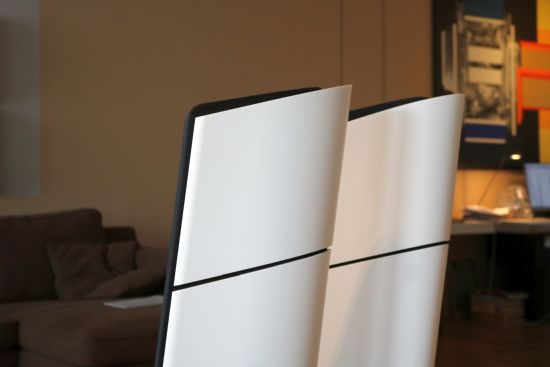
Stilla Appearance
Underneath the Stilla’s sleek and elegant and relatively simple appearance is a technologically highly advanced and deeply clever design. Hiding behind the cloth covers are four drivers, each one optimized according to Aequo Audio specifications. But even if the drivers were visually exposed (as is the case with the more upscale Ensis model) there is still nothing obvious to give away the depths of the technological advances that went into their design, much less the complex inner workings of the speakers.
This, of course, can be a blessing or a curse. Based on the responses that I got during my time with the speakers, the Stillas have enormous appeal for those who want superb, truly full-range sound without letting the speakers dominate the room. But for the more technical-minded or more dogmatic people, their small and elegant appearance may give the wrong impression, leading some people to underestimate the speakers based on their looks and subsequently question their price point.
Even if it is explained that the speakers have an active bass section with two analog controls (no DSP!) to allow placement in virtually any listening environment while still obtaining even-handed and deep-reaching bass, arguably, the Stilla’s true brilliance is still overshadowed by their modest appearance.
In an effort to take away any doubts it is necessary to dive deeply into the technologies that went into the design of these speakers. But in order to start paving the way for the rest of the review let me state right now that, in spite of their very compact dimensions and their deceivingly simple looks, the Stillas have impressed me deeply. I know that the price seems steep but please trust me when I say that their price tag is absolutely reflected in their performance.
Technical description
There is so much to say about the technology behind these speakers that if I were to dive too deeply into it, this review could easily become the longest one I ever made before even arriving at the part where I describe how the speakers perform! And that, in my opinion, is ultimately always what matters most. Thus, I will try to keep this section brief.
Besides a novel approach to cabinet shape, Aequo Audio also has a big focus on the use of their proprietary “S-Stone” artificial stone material for the cabinet enclosures. But not for the mere sake of a beautiful appearance. With Aequo Audio, form always follows function. In designing the Stilla, Aequo Audio decided to not produce a simplified version of the Ensis speaker, but rather the best possible loudspeaker at the 18.000 euro price point. The design brief contained the requirement that the measured performance of the new speaker, especially in terms of cleanliness and high-resolution precision as well as in terms of the balance between even and odd harmonics, would be very close to that of the Ensis speaker.
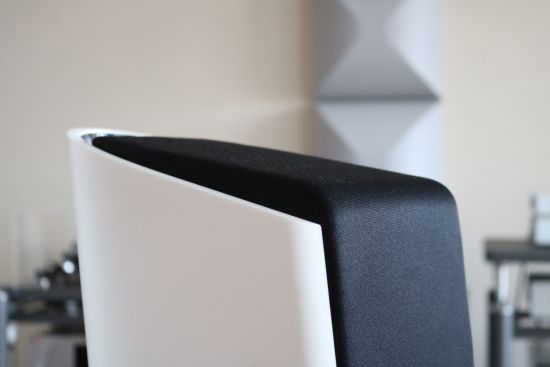
Enclosure
The concave white shell that makes up the biggest part of the Stilla’s enclosures is made from a big slab of S-Stone that is shaped into its curvy shape using industrial high-precision oven equipment and a 20-ton hydraulic press. While not dissimilar to materials such as Krion (a mixture of Minerals and Resin) or Corian (a mixture of polymer and natural minerals), the material that is used for the Stilla’s elliptic enclosure has a uniquely developed composition based on a mixture of ceramic particles in an acrylic bonding material.
The 16cm wide shape of the speaker enclosure contains no parallel walls and is optimized against unwanted resonances, less susceptible to internal material resonances and does not diverge internal pressure waves to a single point. Inside are various isolated compartments and carefully thought out heavy bracing. While the Stilla is a ported design, the implementation of the bass-reflex port is far from standard. A tapered cavity that spans the entire length of the lower subwoofer cabinet ends in a horn-loaded output to output frequencies right down to 18Hz at -3dB measured in-room. The speakers actually reach still deeper beyond that, right down to an amazing 14Hz. The tapered horn construction prevents compression effects and noise whilst the use of acoustic damping material avoids any remaining scuffing sounds at excessive volume levels.
Instead of focusing on an as flat as possible frequency response on-axis or for a specific angle to the speaker, Aequo Audio looks at the energy distribution/dispersion in all directions and at any angle. They then study how this energy is reflected or how it is absorbed.
Grille
The speaker grille is the subject of an ongoing debate. Apart from the protection that they may offer to the drivers, some listeners may prefer the sound of a particular speaker with, or without the grille. The problem with a removable grill is that the speaker’s phase response and voicing can be optimum only with or without the grille attached. Even if the fabric is 100% sonically transparent, the dimensional properties, edges and such will still affect the sound. That is why the Stilla was designed to be used with grille and why it is not removable.
Driver Design
For the development of the drivers and crossovers, Aequo Audio works alongside specialists from Denmark, among which Ejvind Skaaning who started his career at Seas in Norway, later returning Denmark where he founded Scan-Speak and Dynaudio. At 88, Skaaning recently passed away, leaving his company to his son Per, with whom he worked closely together during his final years. Skaaning’s legacy and the accumulated knowledge of his co-workers are represented in the drivers that have been developed by Per and his team in collaboration with Aequo Audio.
One of the most important aspects when it comes to designing drivers is to find the ideal balance between stiffness and damping. Too much stiffness alone will inevitably introduce resonances while too much compliance will introduce harmonic distortion and too much damping can add thickness or deaden the sound. The ultimate goal for Aequo Audio is to reproduce sound that is highly accurate and transparent yet also highly natural. For instance, while the best exotic-material tweeters can achieve near-pistonic behavior and very low levels of distortion, Aequo Audio feels that extremely hard materials always add a measure of unnatural shine or spark to the musical performance due to the break-up frequency (even if it is above 20kHz) leading to induced effects further down in the audible range. While the use of paper or polypropylene composites may not sound as lofty as materials such as beryllium or carbon, the properties of the materials used for the Aequo Audio drivers are actually state-of-the-art.
Drivers
The tweeter assembly consists of an aerodynamically shaped front and back chamber, isolated from the other driver’s cabinet space. The doped s-silk dome-ring tweeter with a high-speed ferrite motor follows in the footsteps of work done for the Ensis tweeter although the Stilla’s tweeter has a slightly more forgiving motor design compared to the one used in the Ensis, leading to a slightly smoother musicality desired by a wider audience.
As with the original, the Stilla’s tweeter is fitted with a dispersion cone to eliminate unwanted effects in the top octave, and also to fix the middle of the dome tweeter section against resonance. The membrane is driven directly by the voice coil as with any other tweeter but with a larger flexible surround than is the norm and with its center point fixed in position. That is something that I am not aware of anyone else doing. For the Stilla specifically, the acoustic lens was optimized by using fast 3D prototyping to make it work with even more demanding (smaller) rooms and to adjust time alignment of the slightly less tall speaker to best fit the various possible listening heights.
The mid-bass unit is made from mineral-filled PP and is fitted with a super-high-speed ferrite motor. The unit is mounted in a closed section with a tapered backside to avoid parallel walls and minimize the returning sound waves from the rear of the cabinet. Special Baileys longhair sheep wool is applied to dampen some of the remaining energy without the loss of natural and high sensitivity reproduction of
midrange frequencies.
Then we arrive at the Stilla’s powerhouse section where two 7-inch (17.8 cm) Nomex-coated woofers with large excursion symmetric motors are placed at a 45-degree angle for maximum stiffness, to avoid resonances and to allow for a very narrow speaker baffle. Thanks to smart placement of the first driver under 45 degrees, facing front and sideways, and then aligning a second one under 45 degrees facing the other side of the speaker, the drivers effectively cancel out mutual vibrations. The remaining backward/frontwards energy is dealt with via the controlled flexing in the foot, about which I will explain more further below.
Crossover
In order to introduce as little phase shifting as possible, the Stilla uses a first-order crossover. The speaker is indicated to have perfect time-coherent behavior in the treble and midrange/upper bass with both drivers moving together in perfect synchronization over virtually all frequencies far beyond the crossover band around 2kHz.
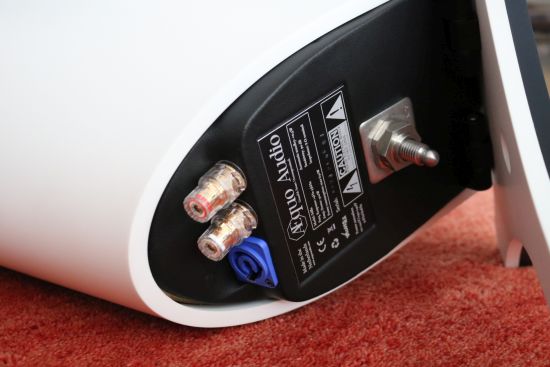
Pivoting Foot
Each speaker is mounted on an adjustable pivoting three-pronged multi-layer aluminum/S-Stone foot that is attached to the speaker with a single hinge resting on four vibration-dampening bearings while the amount of tilt can be adjusted by hand using a single hexagon nut. The speaker’s entire weight rests on a single point of contact via a stainless steel ball-end that supports the full weight of the speaker, filtering out sideways movements. The position of this single point of contact is carefully chosen in order to utilize precisely the required amount of the foot’s natural flexibility. The speakers’ front-to-aft position is thus slightly springy to allow for the dissipation of unwanted vibrations while retaining a solid coupling to allow for fast and precise sound.
While I am writing this, I can’t help but be impressed. And we haven’t even come to what is arguably these speakers’ biggest selling point: the fully analog ARPEC system.
